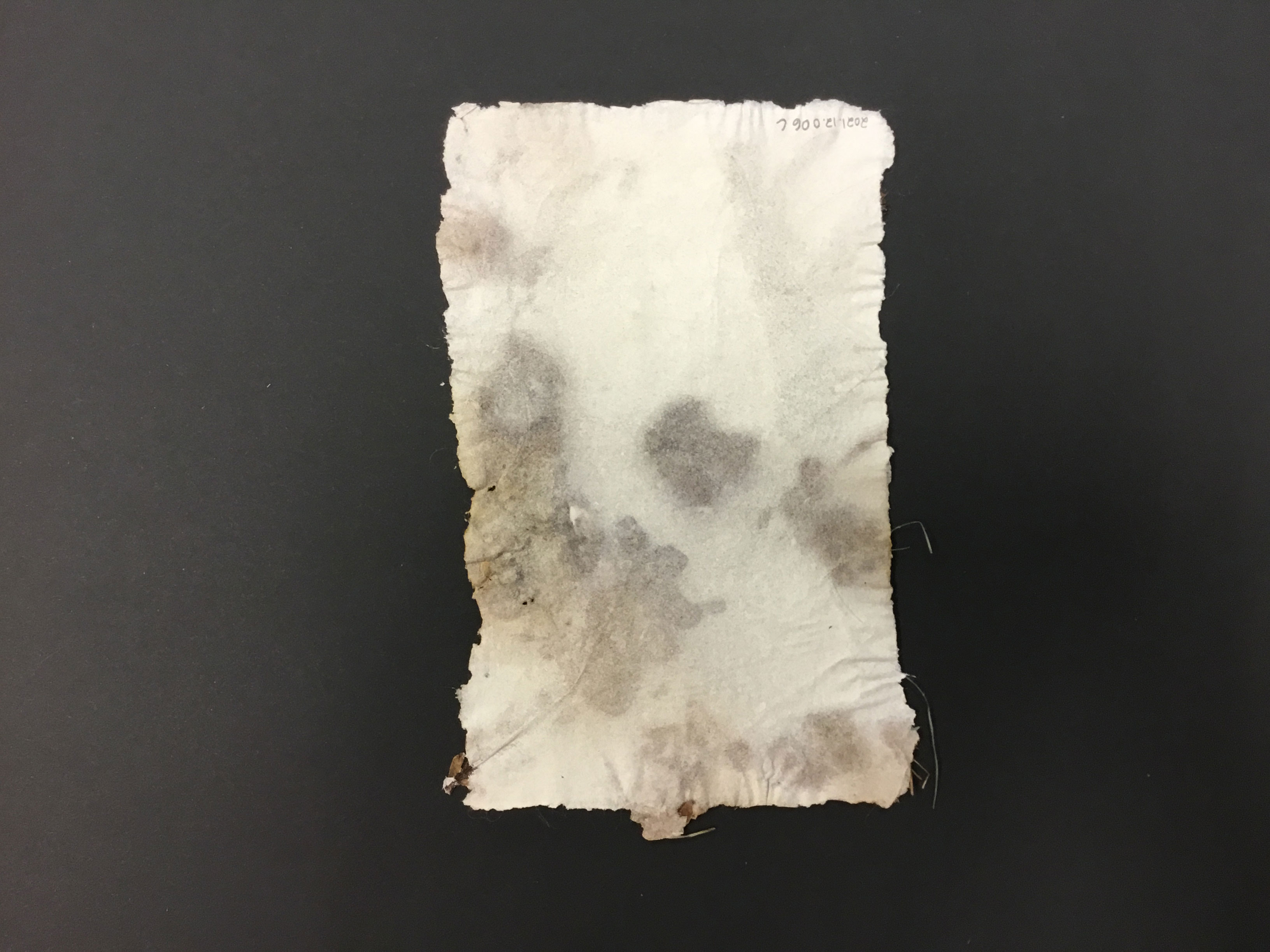
Shaull's incredibly layered and complex piece features sheets of leaves and a map of a place significant to him.
Artist's Statement: "Material: Base sheet and veil are blend of 50% 2nd cut cotton linters and 50% premium abaca. Natural inclusions include leaves, grass clippings, ferns and other "Ohio backyard" botanical materials.
The inspiration for my piece of handmade paper came from several of the conference speakers whose papers, knowingly or not, were a unique reflection of time and place - paper that could only have been created on that day and in their particular location. Specifically, Amanda Thackray and her monoprints from beach debris, Henry Obeng and his nature photos printed on paper made from fibers taken from each place, and Ingrid Schindall's papers made with ocean water and directly on the surface of the sands of south Florida.
My paper is a reflection of my own place and time at this moment in October 2021. It's a 50-50 abaca-and-cotton-linters-blend base sheet with a map of my neighborhood from my property deed (imprinted on 50-50 handmade paper made separately and laminated to the base sheet wet), and plant inclusions taken from my backyard on a typical Ohio afternoon. You'll find bits of maple and cherry tree leaves, hydrangea blossoms, fern curls, grass clippings, etc...
I bought the pulp from Carriage House in dry board from, hydrated it overnight and beat it 4 hours in my Mark Lander Little Critter Hollander beater. I formed the sheets in a vat on an 8.5 x 11 mould and deckle split in half by masking tape to form two 5.5 x 8.5 sheets. As a last step, I couched a thin veil of the same blend on top of the sheets to better hold and preserve the inclusions. I did not press the sheets, instead drying them outside for two days on the pellons. I then removed them from the pellons (still slightly wet) and dried them between newspapers weighted with heavy books for an additional 2 days, changing the newspapers every 12 hours. I'm surprised (and pleased) by how much the natural dyes in the leaves and other materials colored the paper."
